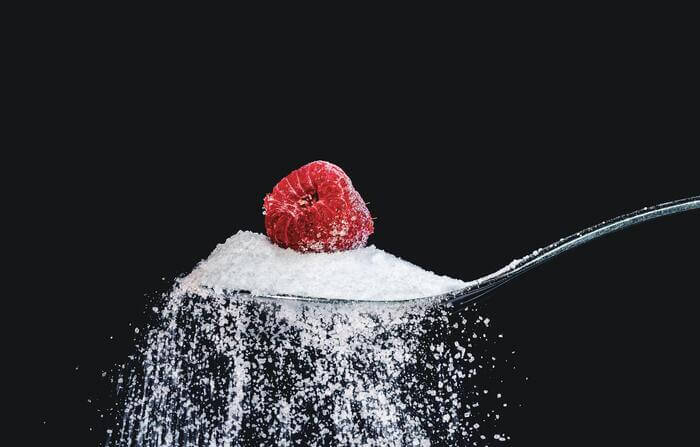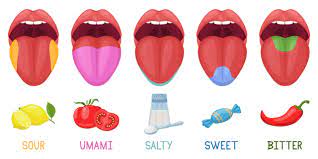
In addition to the five basic tastes—salty, sweet, sour, bitter, and umami—you can add another to the list: protein-rich foods.
Some protein-rich foods are considered delicacies in certain cultures, while others are easy to find at any grocery store in the world.
Either way, it’s easy to see why we love eating these protein-rich foods so much. This article discusses which basic taste attracts us to protein-rich foods and makes some recommendations of where you can get your fill of each one!
Table of Contents
1) Sweet

Foods high in sugar will make your brain release dopamine, a chemical that makes you feel good. Over time, though, you’ll become less sensitive to dopamine and might need more and more sugar in order to achieve a similar high.
Ultimately, eating foods high in sugar can lead to an addiction. The good news is that sugar is highly addictive—but it’s also easy to overcome those cravings. Try replacing sugary snacks with fruit or other low-sugar alternatives.
If you want to cut out sweets altogether, start by eliminating sugary drinks from your diet. For example, if you normally drink soda or juice on a daily basis, try replacing it with water or unsweetened tea instead.
You may find that over time, your taste buds adjust and you begin craving something else instead of feeling like you’re missing out on something sweet when cutting back on sweets.
Be aware that you’ll probably experience withdrawal symptoms such as headaches, irritability and fatigue at first—these are normal! Your body is just getting used to having less sugar.
These side effects should fade after about two weeks. After a month without added sugars, most people report not craving sweets at all anymore. In fact, many people discover they enjoy healthier alternatives even more than they did before.
It takes time for your body to adjust, but it’s worth sticking with it!
While protein is often touted as being great for weight loss, there are actually many other reasons why protein is so important for maintaining health and losing weight safely:
• Proteins help build muscle mass which burns calories 24/7. Even while you sleep (yes, even while you sleep).
• Eating a diet rich in proteins keeps hunger at bay because proteins take longer to digest than carbohydrates or fats; resulting in fewer calories consumed overall.
• High-protein diets tend to be lower in fat which reduces calorie intake further still and helps reduce belly fat stores.
2) Sour

The sour taste is what most of us think of when we hear taste (and its certainly one that’s been around for a while).
But did you know that there are actually five basic tastes? While they may not get as much attention as their sweet and salty counterparts, you’ve likely experienced all five at some point.
The basic tastes are: Sweet, Sour, Salty, Bitter and Umami. Here are a few ways that our bodies tell us to eat more protein foods through each one.
Protein in your diet can help curb hunger pangs by keeping blood sugar levels steady and creating satiety, or fullness. There are plenty of protein-rich foods available—here are just a few examples: Eggs; Meat; Fish; Milk; Beans; Nuts; Seeds. It’s also easy to make sure you’re getting enough of these important nutrients by taking dietary supplements such as whey protein powders.
Whey isolate is one of nature’s best sources of quality protein and can be used alone or combined with other supplements in order to build muscle mass, boost metabolism or promote weight loss.
If you’re looking for more ways to add more protein into your diet, consider adding a supplement like whey isolate into your daily routine.
Stomach grumbling often occurs because we have an empty stomach (or too much of it). When we don’t eat regularly throughout the day, our bodies will begin to burn its own fat stores for energy (something that’s called catabolism), which causes our stomachs to growl because they need food!
3) Salty

We love salt. And while humans need a small amount to survive, it’s also true that most of us eat way too much of it. If you crave protein foods, you might be eating too much salt.
Sodium intake has been linked to higher blood pressure and heart disease, which makes your organs work harder and increases your chances of developing coronary artery disease.
Plus, sodium can cause water retention and bloating—both of which make you look bloated. To lose weight safely but quickly, reduce your intake of high-sodium foods like canned goods, soy sauce, cheeses (other than Parmesan), salty snacks and fast food.
Steer clear of processed meat like bacon and lunch meats as well. On average an 8 oz serving has more than 1 gram! Instead, opt for low-sodium alternatives such as fresh or frozen vegetables, fruits and whole grains.
These are packed with fiber and nutrients so they’ll fill you up without adding extra calories or sodium. For example, instead of grabbing a bagel for breakfast on your way out the door, grab some sliced cucumbers. They taste great on their own and add crunch to salads.
Even better? Try slicing them up with hummus or homemade guacamole—two healthy dips made from ingredients you probably already have in your kitchen!
4) Umami
Umami is a Japanese word that means delicious or savory. Many of us are familiar with umami, since it’s one of our five basic tastes—the others being salty, sweet, sour and bitter.
We might describe foods rich in umami as brothy or meaty, with a savory flavor to them. In fact, we know about 90% of what makes up umami already: Glutamate is present in foods like tomatoes and parmesan cheese. And asparagine occurs naturally in certain meats.
The easiest way to create something savory is by adding salt—but salt isn’t technically part of umami; only glutamate and asparagine fulfill that role. To take advantage of umami, you can add ingredients that contain glutamates and aspartates (like monosodium glutamate) to your dishes.
You can also use ingredients high in natural salts (like sea salt), which will enhance flavors without adding sodium content.
If you don’t have any food on hand that contains these components, simply wait a few minutes before eating—your body will begin producing its own glutamates and aspartates.
It may not be as tasty, but it works! Just make sure you consume enough protein throughout the day so your body has plenty of material to work with.
Otherwise, you could wind up consuming less than recommended amounts for overall health and wellness.
5) Bitter

Bitter foods like kale, Brussels sprouts, broccoli and arugula make for excellent veggie choices. Just one serving a day of these veggies is enough to up your daily protein intake.
Not only are they packed with protein, but they also contain calcium, iron and vitamin K which boosts bone health. Other bitter foods to try: Radishes, eggplant and spinach.
Remember that bitterness is actually a flavor sensation more than it is a description of how good a food tastes; it doesn’t mean you’ll hate every bite! If you’re new to eating bitter foods, start out slowly and work your way up.
You can always add in more of these healthy vegetables as time goes on. The key here is variety—the more different bitter greens you eat, the better off you’ll be.
The easiest way to get started? Arugula salad or green smoothie! Adding in some citrus fruit will help round out its flavor profile too. For those who aren’t into any type of bitter flavors, there are other ways to meet your protein needs without tasting anything unpleasant.
For example, chia seeds pack 10 grams of protein per ounce (and don’t taste bad at all). Almonds also come in at 8 grams per ounce while pistachios weigh in at 7 grams per ounce. Nuts like walnuts and pecans pack 6 grams each while tofu packs 10 grams per half cup cooked serving.
Soybeans contain 20 grams per half cup cooked while edamame beans come in at 18 grams per half cup cooked serving. By adding just two servings of these foods into your diet each day, you’ll be able to increase your daily protein intake by almost 30 percent!
FAQs
Which basic taste attracts us to protein rich foods quizlet?
Question is one of famous question on Quora. You can see its detail here which basic taste attracts us to protein rich foods quizlet? Answer by Robert Sapolsky: See what these five tastes—sweet, salty, bitter, sour and umami—do to your brain at a restaurant. If you don’t know that you are eating chicken, but then suddenly realize it has a familiar taste (umami), you feel like you’ve been tricked or fooled. Umami was discovered in 1908 as an essential amino acid found in meat broths and soy sauce; it’s also present in parmesan cheese, tomatoes, mushrooms and spinach. The flavor comes from glutamic acid (glutamate) molecules that bind to receptors on our tongue called G-protein coupled receptors (GPCRs). The neurons activated by glutamate release neurotransmitters such as dopamine into our nucleus accumbens—the pleasure center of our brains.
which basic taste a traxxas to protein rich foods
Taste is a hardwired part of our survival instinct. If we can’t taste what we eat, then we don’t know if it will nourish us or harm us. This impulse is so strong that at some point in our lives, all of us have been driven to crave specific foods just because they tasted good. But, it doesn’t have to be that way. There are five basic tastes that drive us towards protein-rich foods: saltiness, sweetness, sourness, bitterness and umami (or savory). While these traits are not exclusive to protein foods—they can all be found in different fruits and vegetables—protein generally contains more umami than other nutrients. And, when we experience a food with a high level of umami, our brains release dopamine as well as endorphins, creating an addictive cycle that makes us want to come back for more. The next time you feel like your body needs more protein in order to function properly—whether you’re trying to build muscle or simply feeling hungry—reach for foods with high levels of umami rather than sweet treats.
protein rich foods have what minerals
When it comes to food, people usually think about vitamins and minerals. But what are minerals? Minerals are inorganic substances that come from Earth. Their composition varies greatly, but almost all of them contain oxygen. The chemical element iron, for example, is a mineral that contains 35 percent oxygen by mass. Silicon is another mineral that contains more than two-thirds oxygen by mass. Most minerals contain large amounts of either oxygen or silicon. In fact, these two elements make up about 90 percent of Earth’s crust. You can find out which foods are rich in each nutrient by checking out our Food Nutrient Database . If you’re interested in learning more about how we use our senses to detect nutrients.













